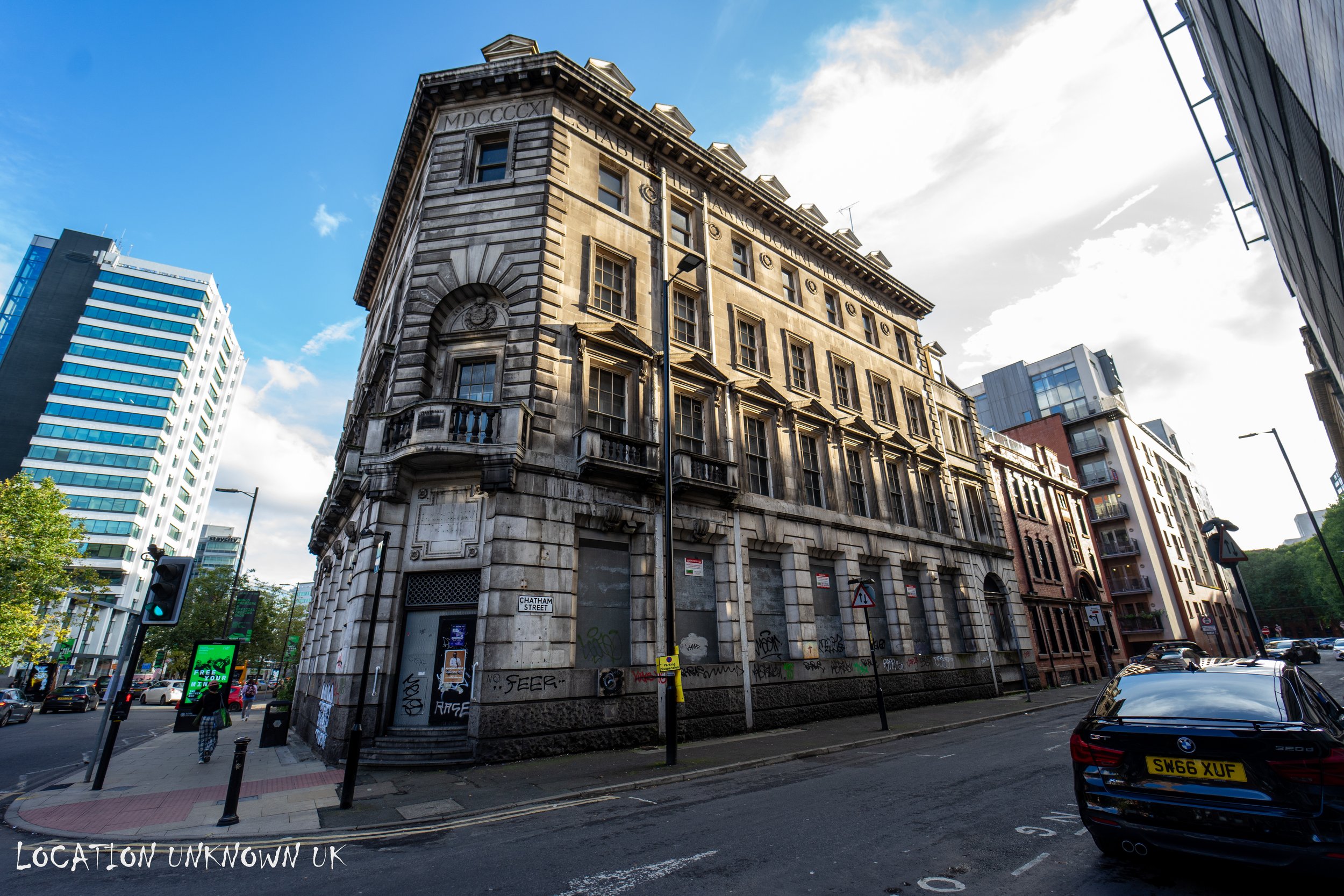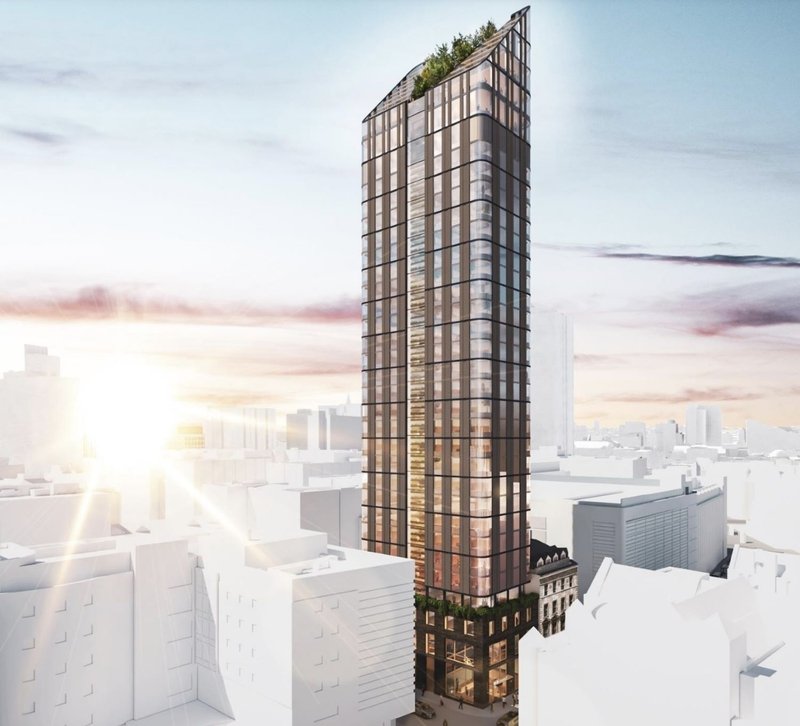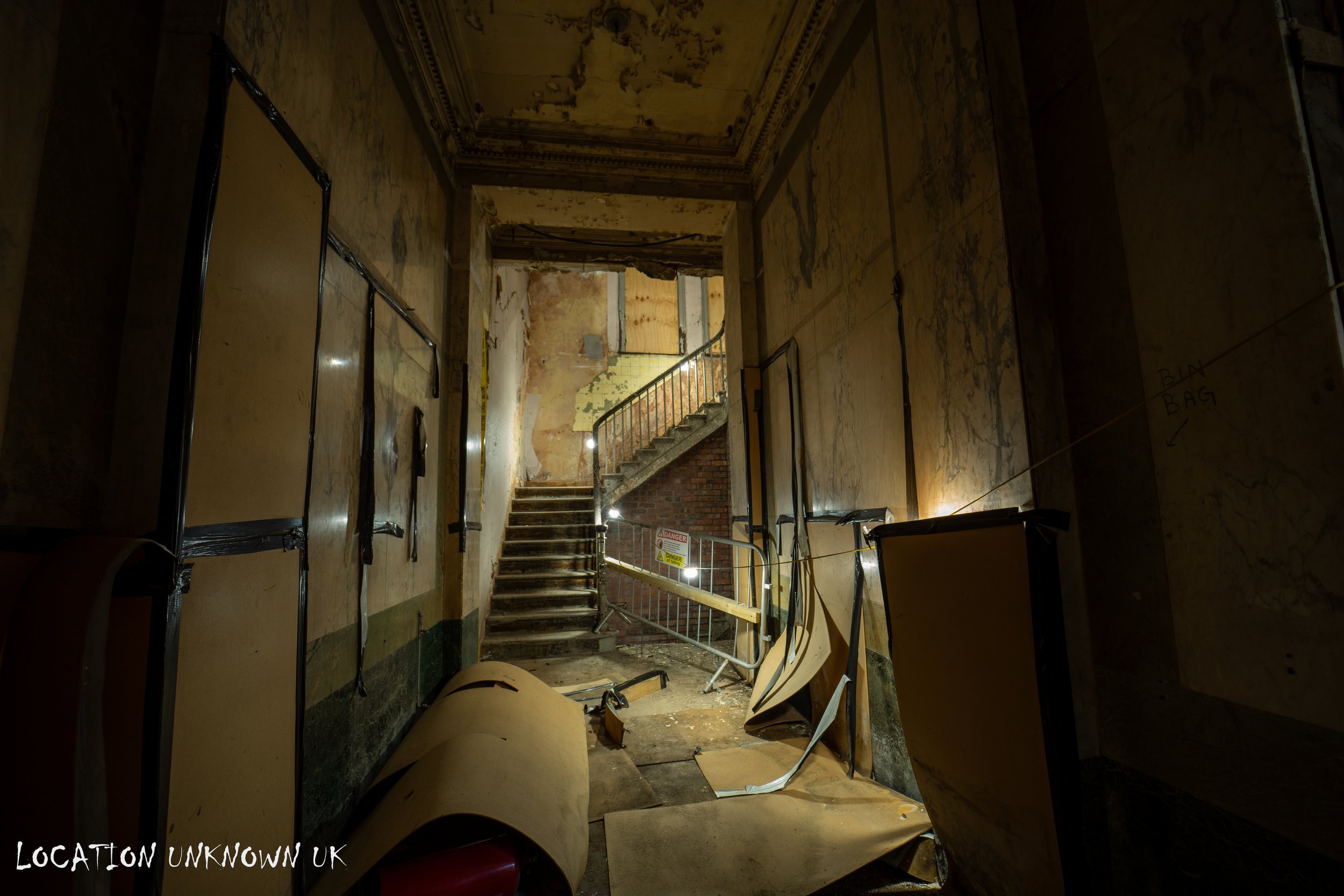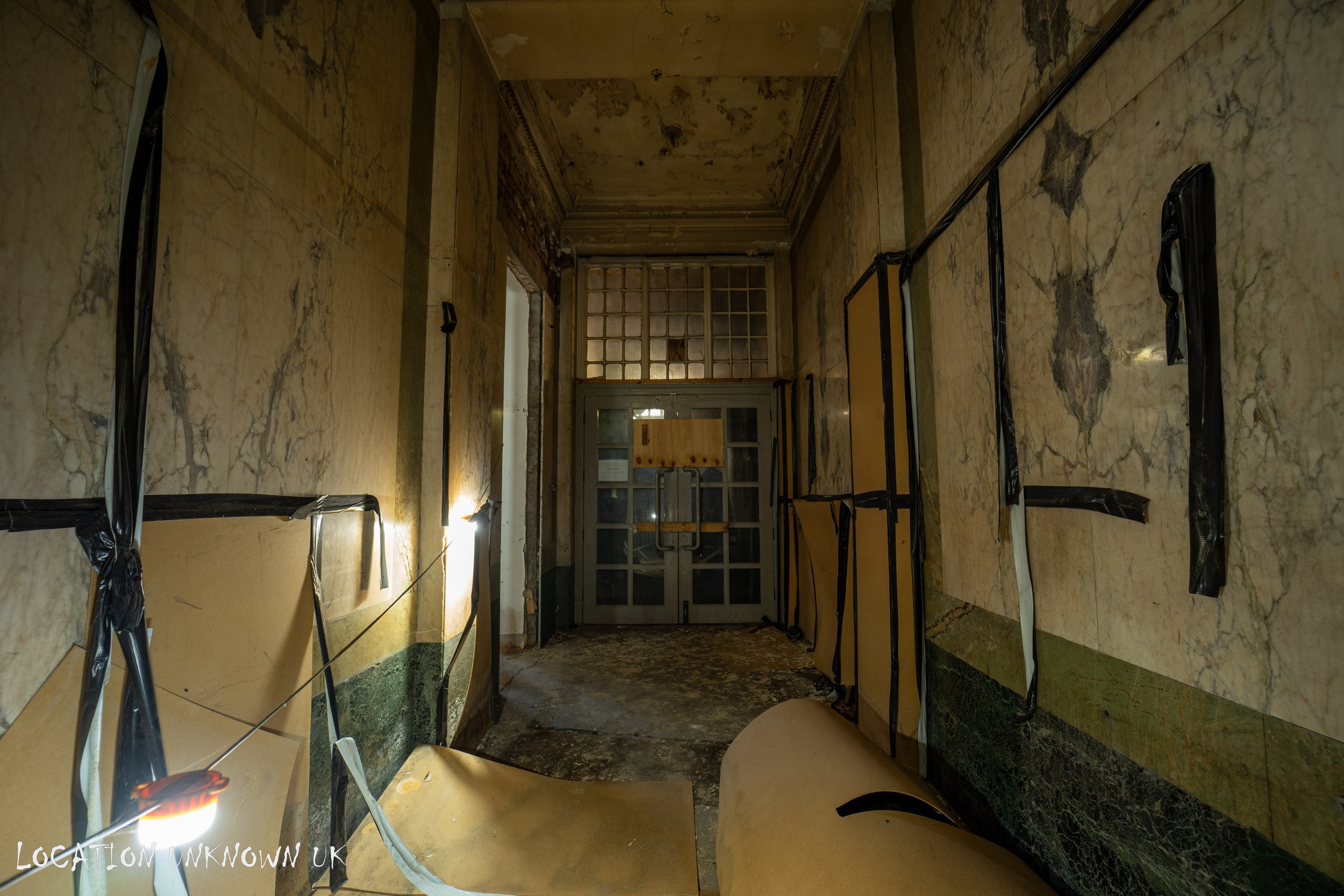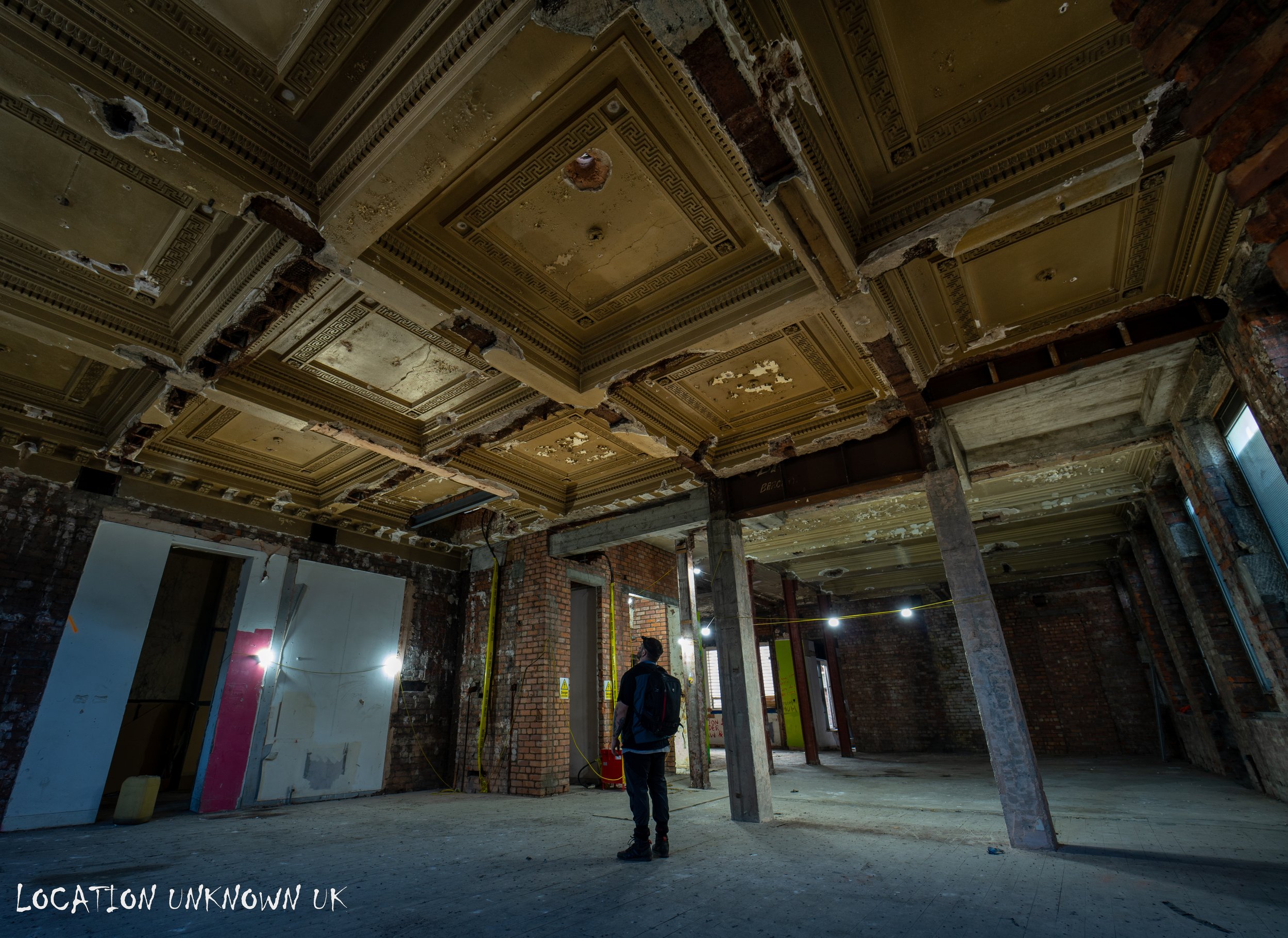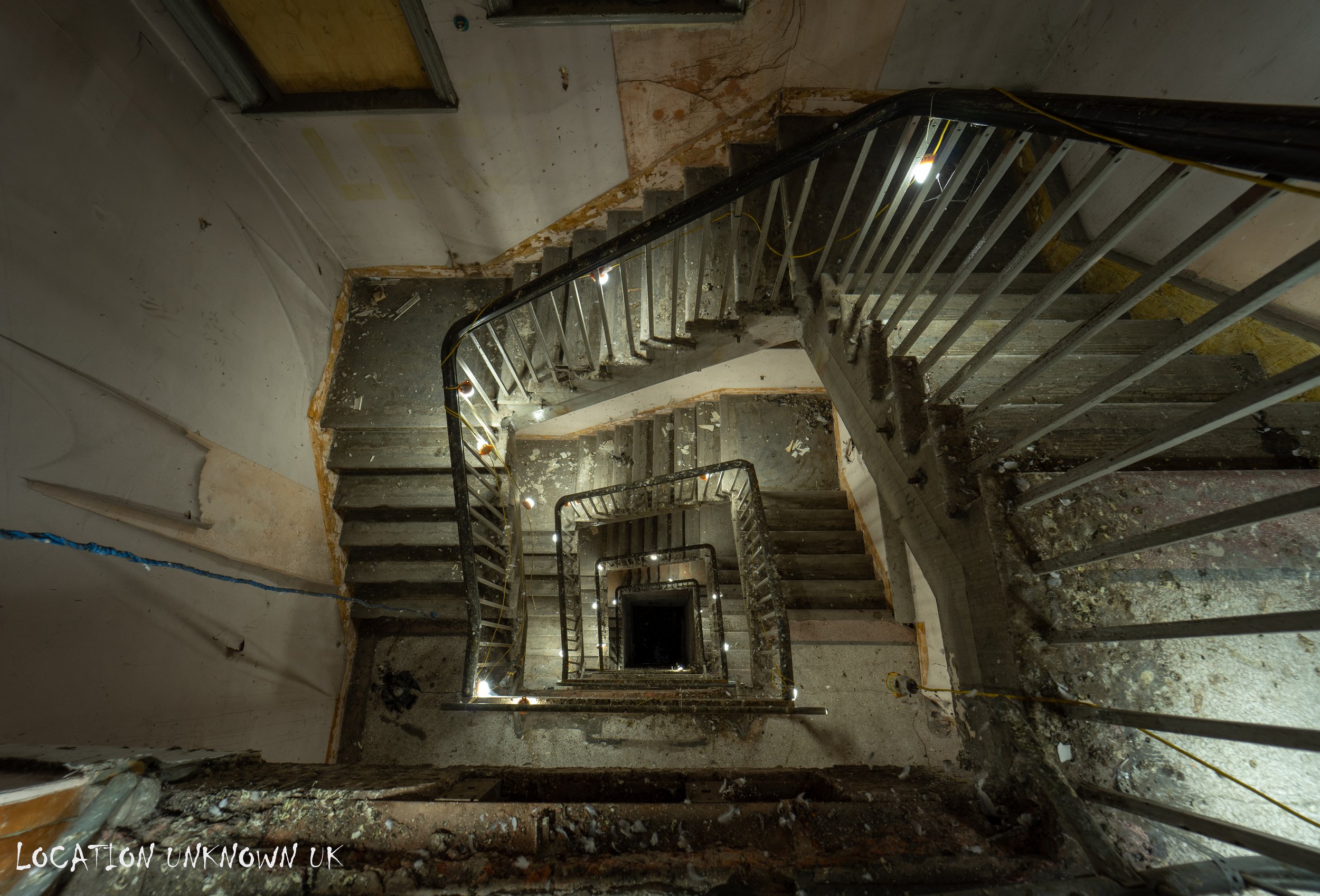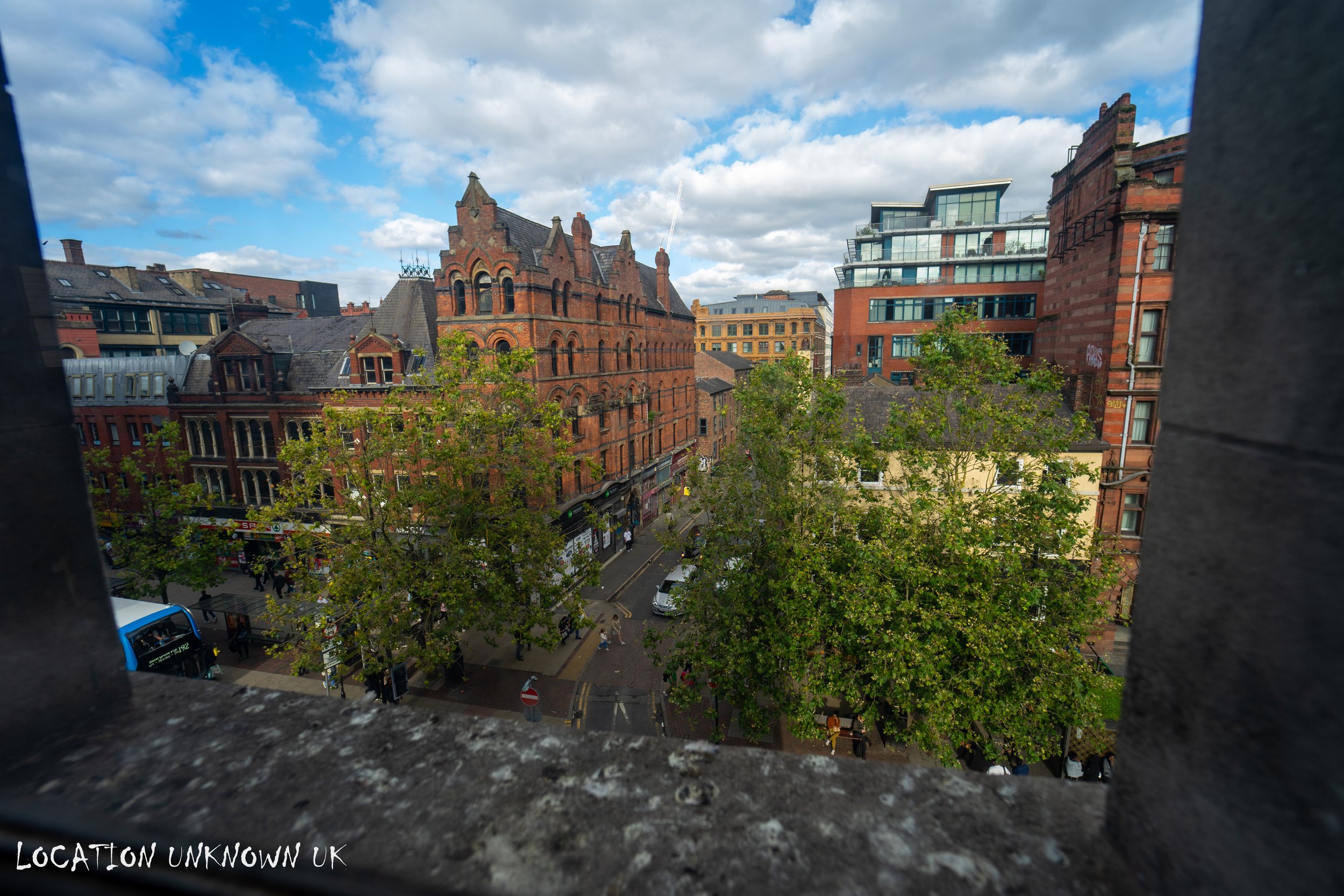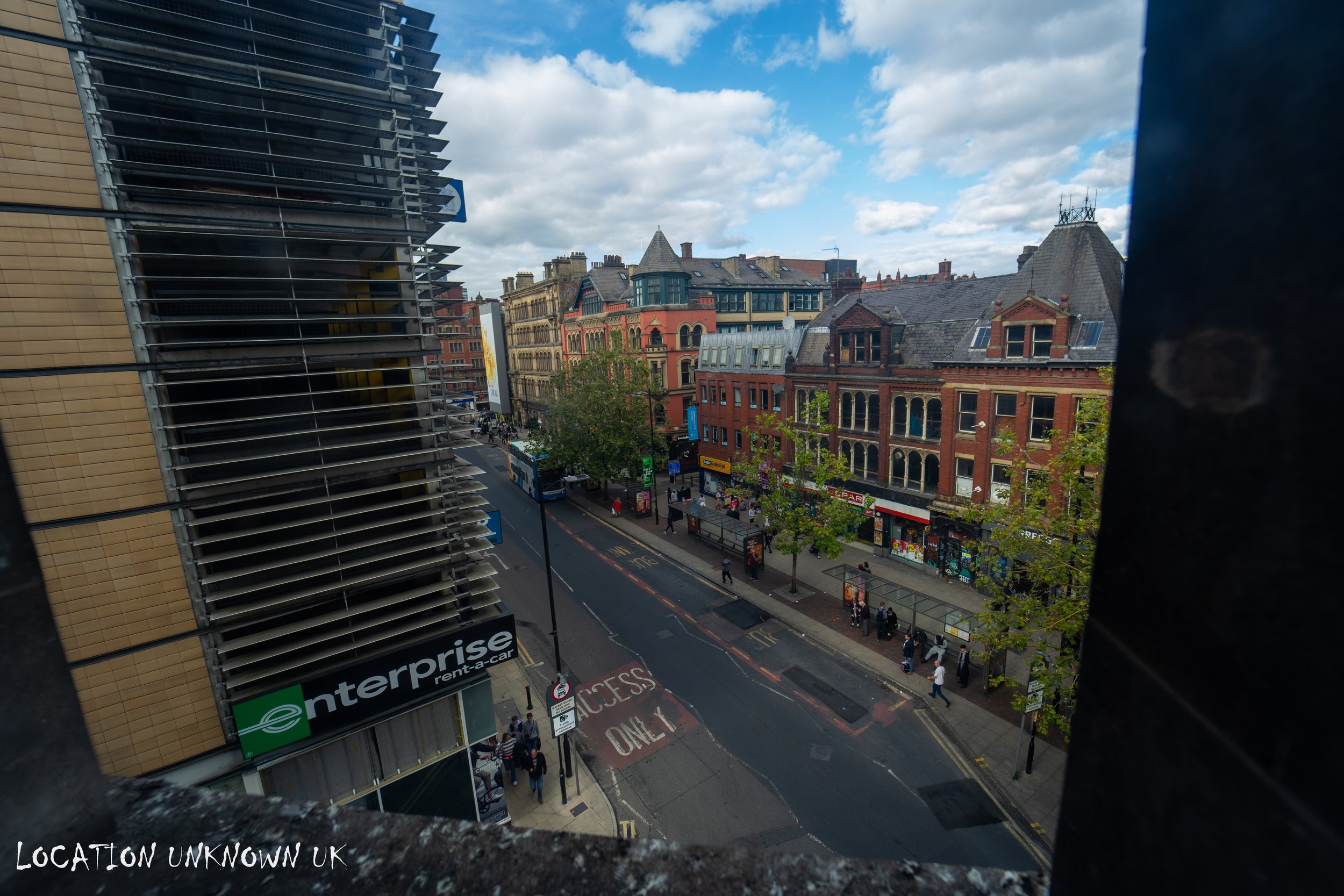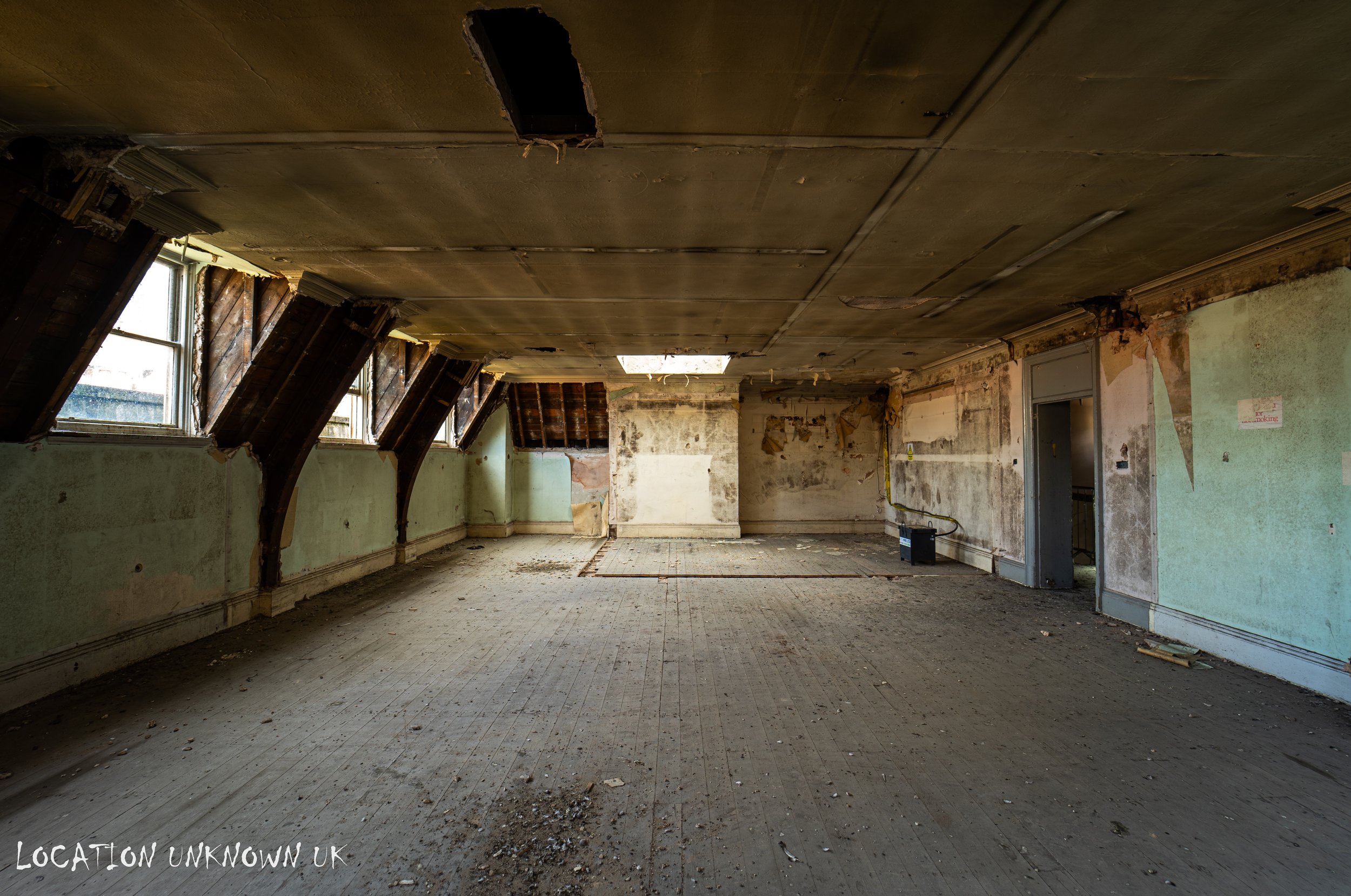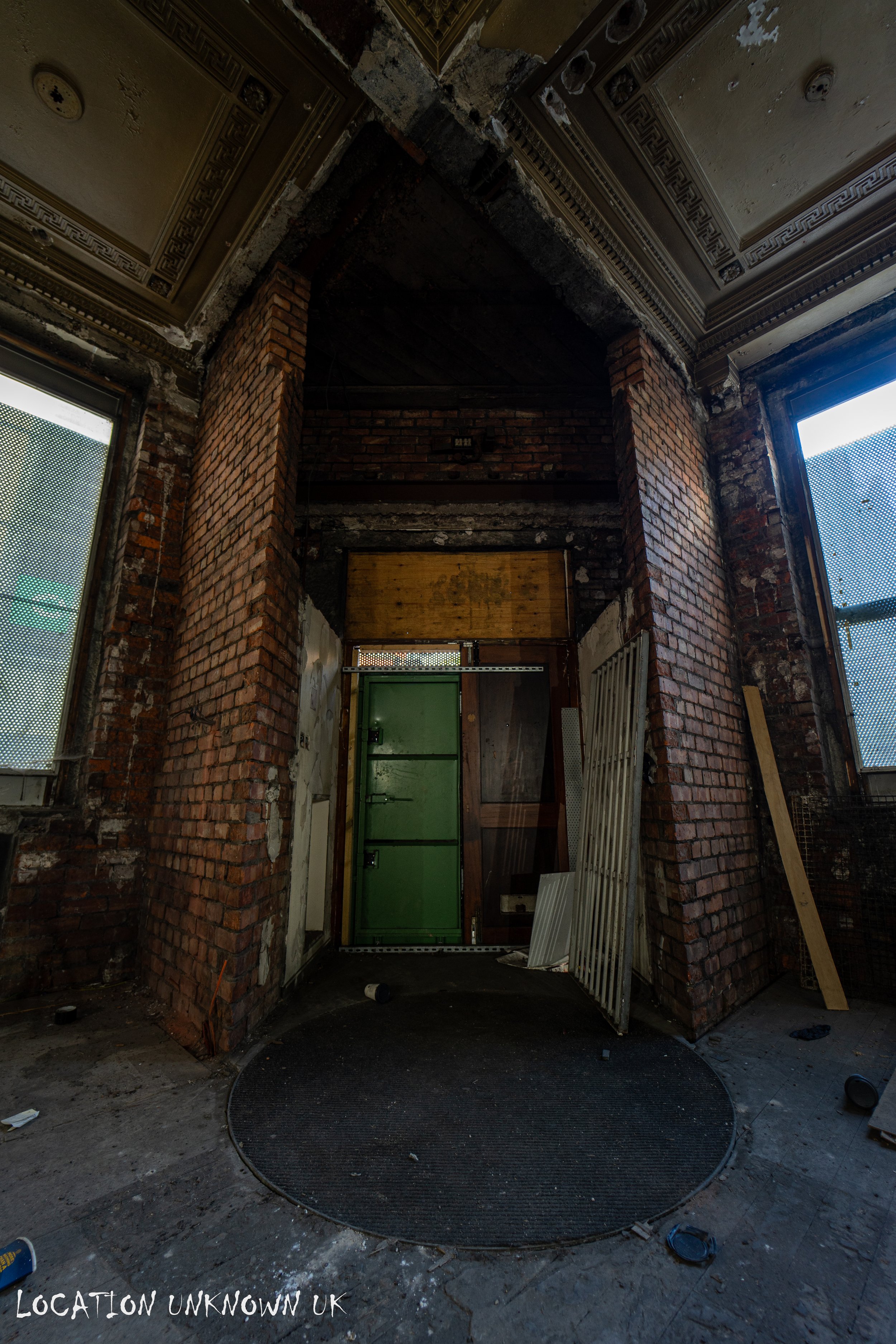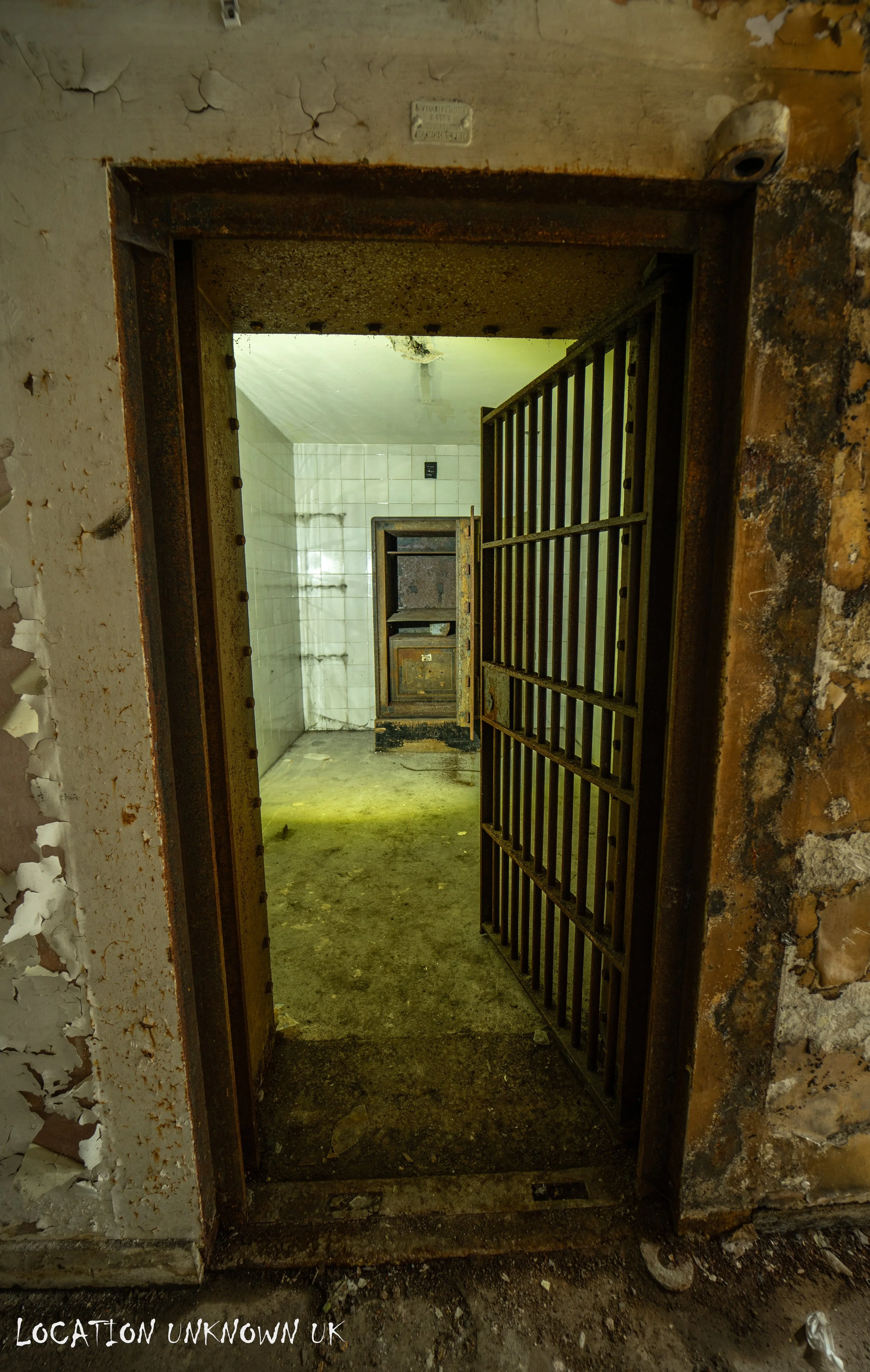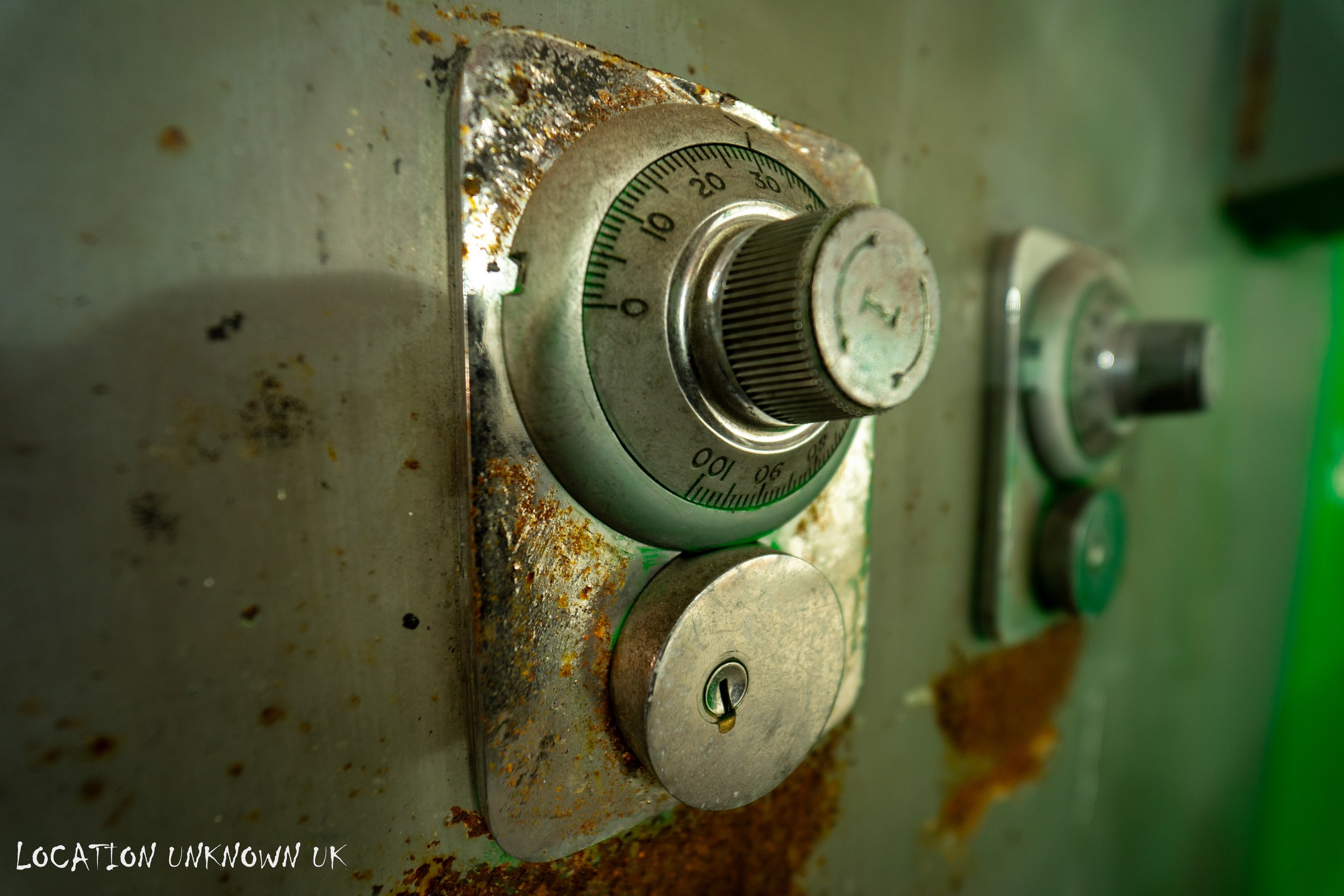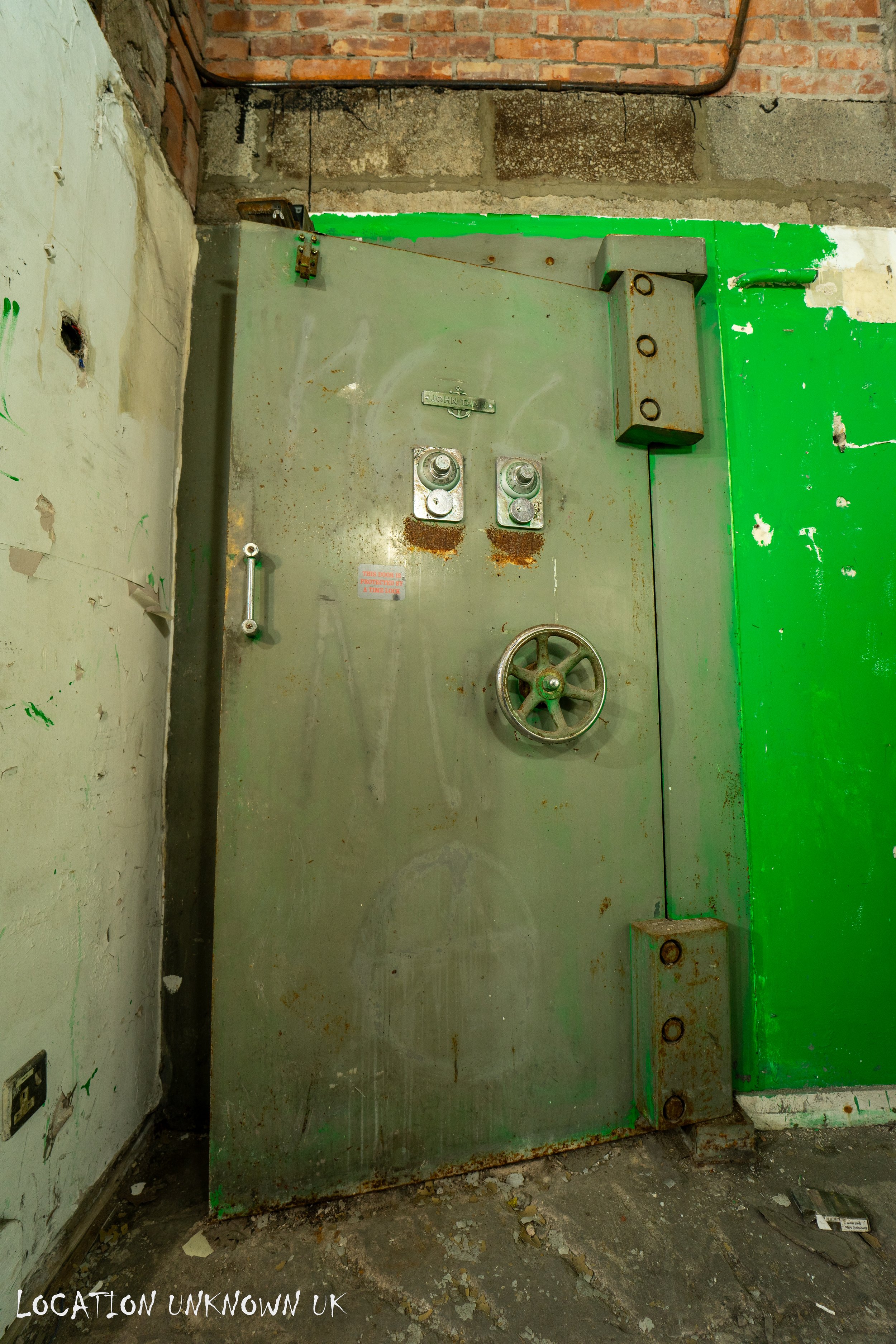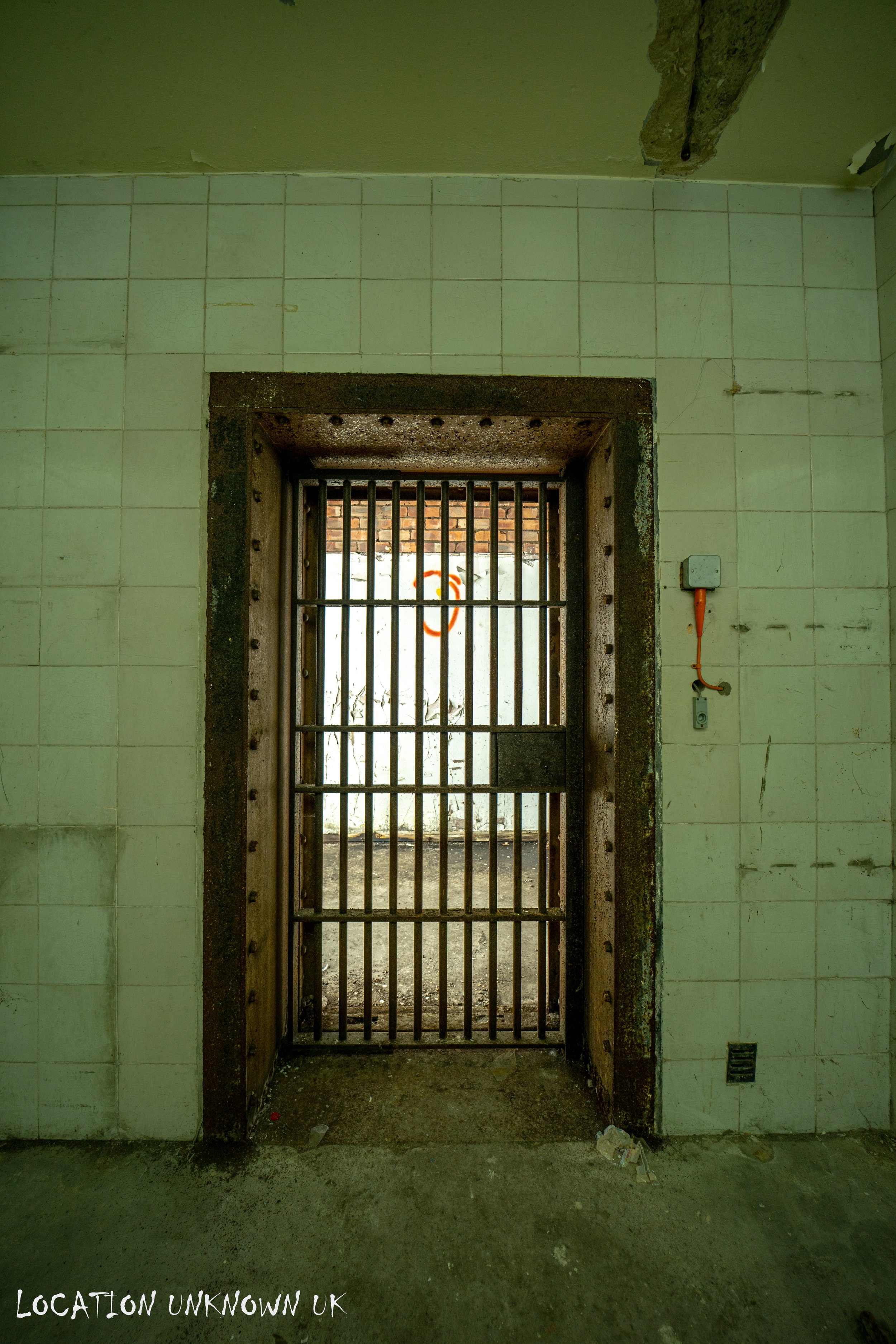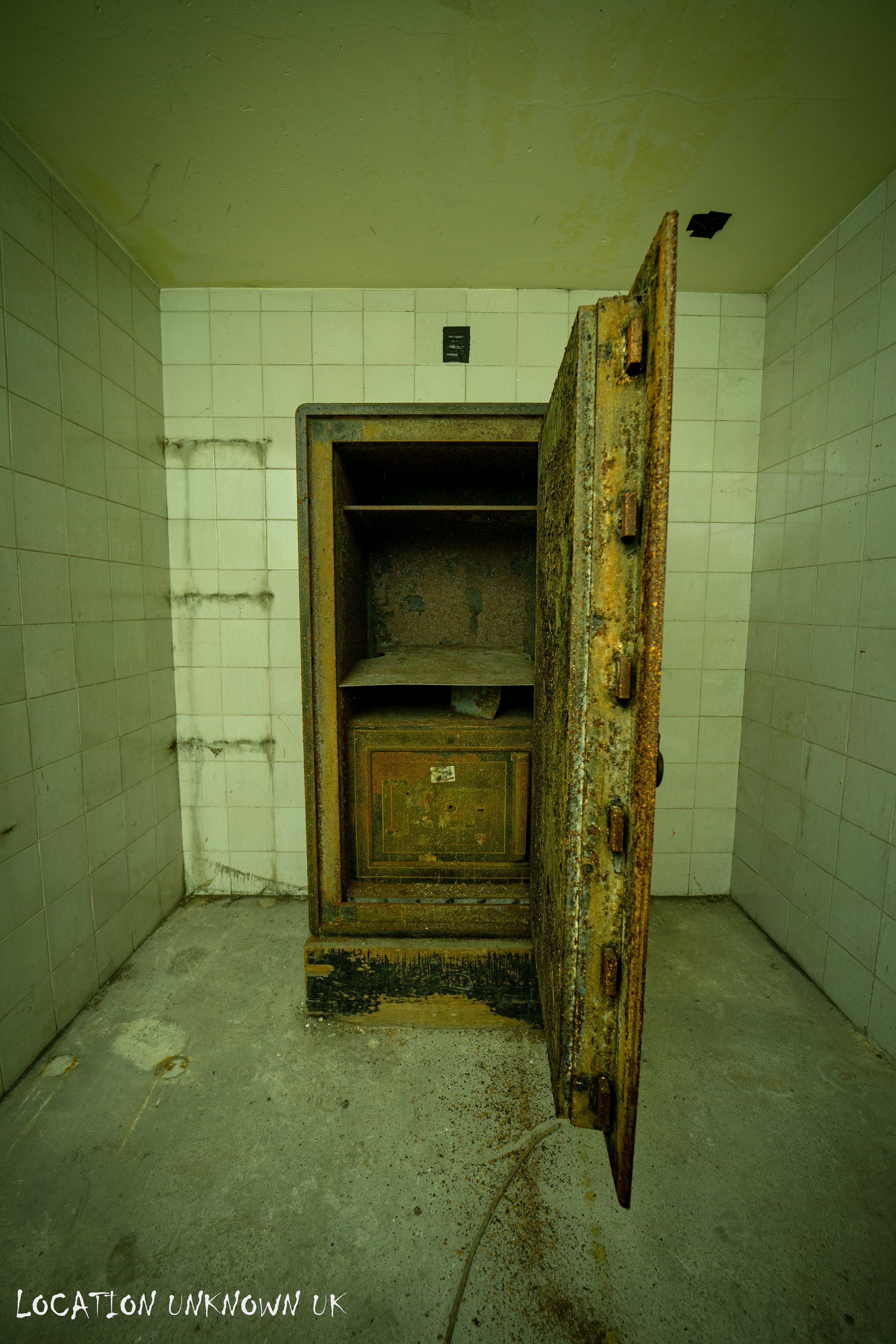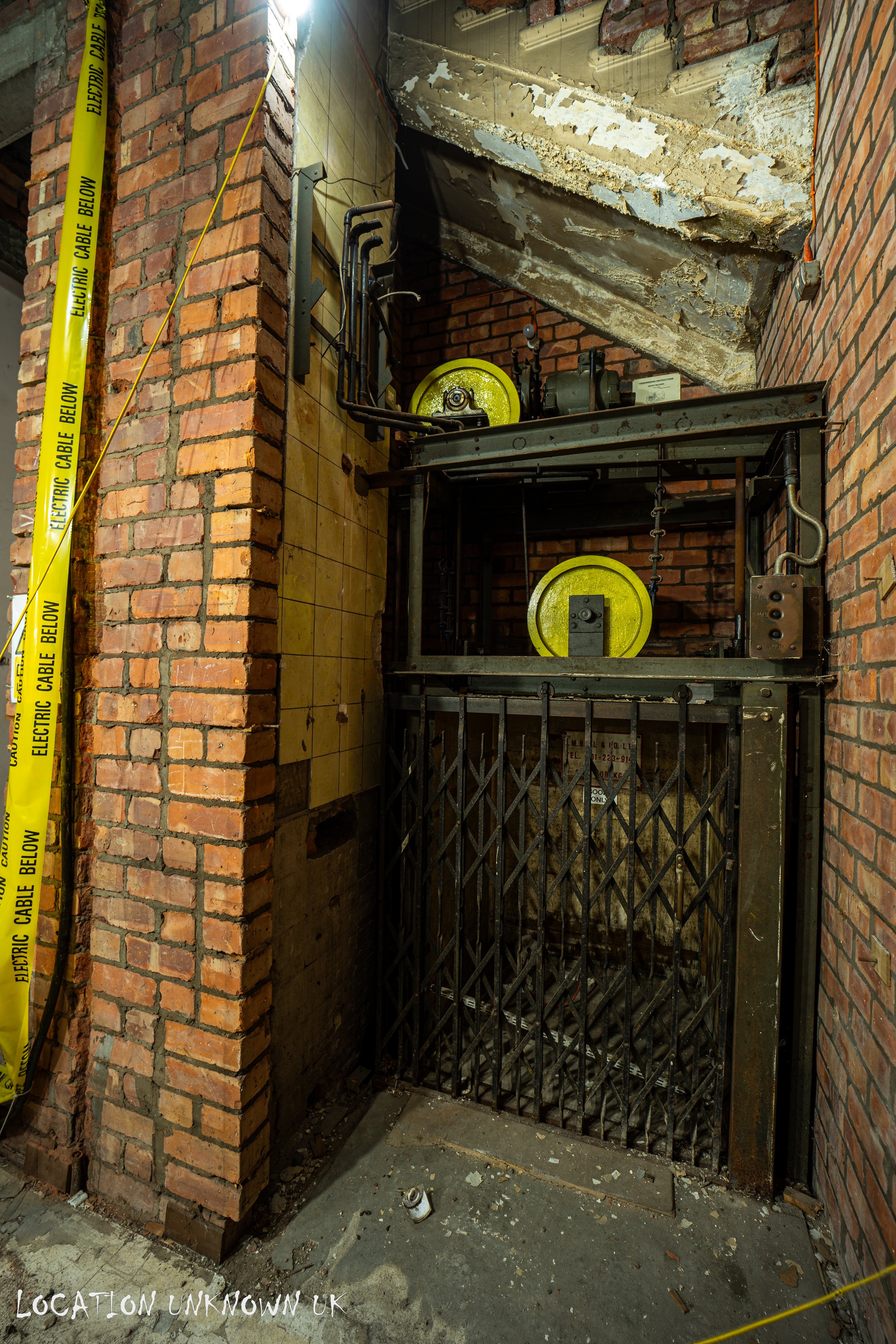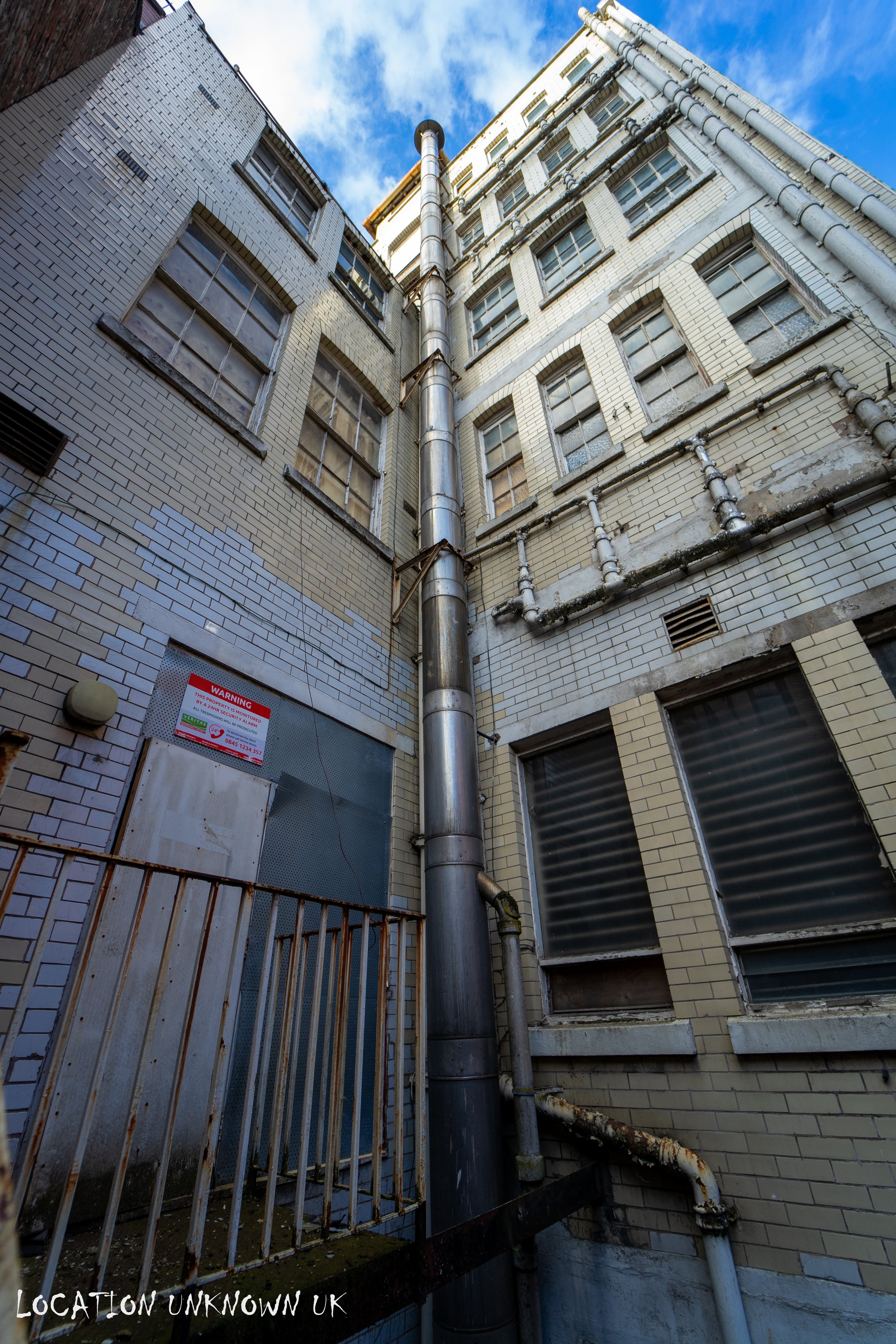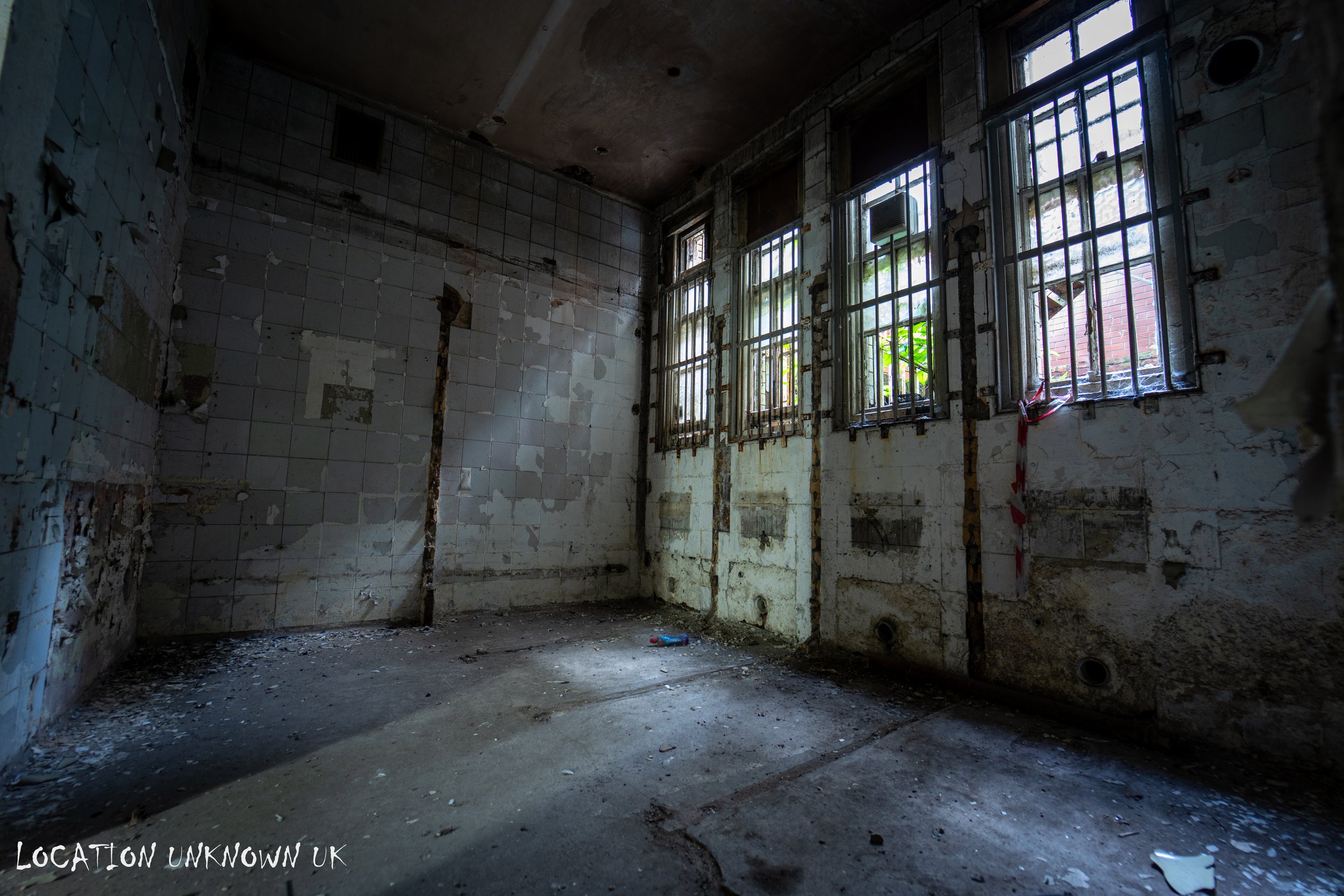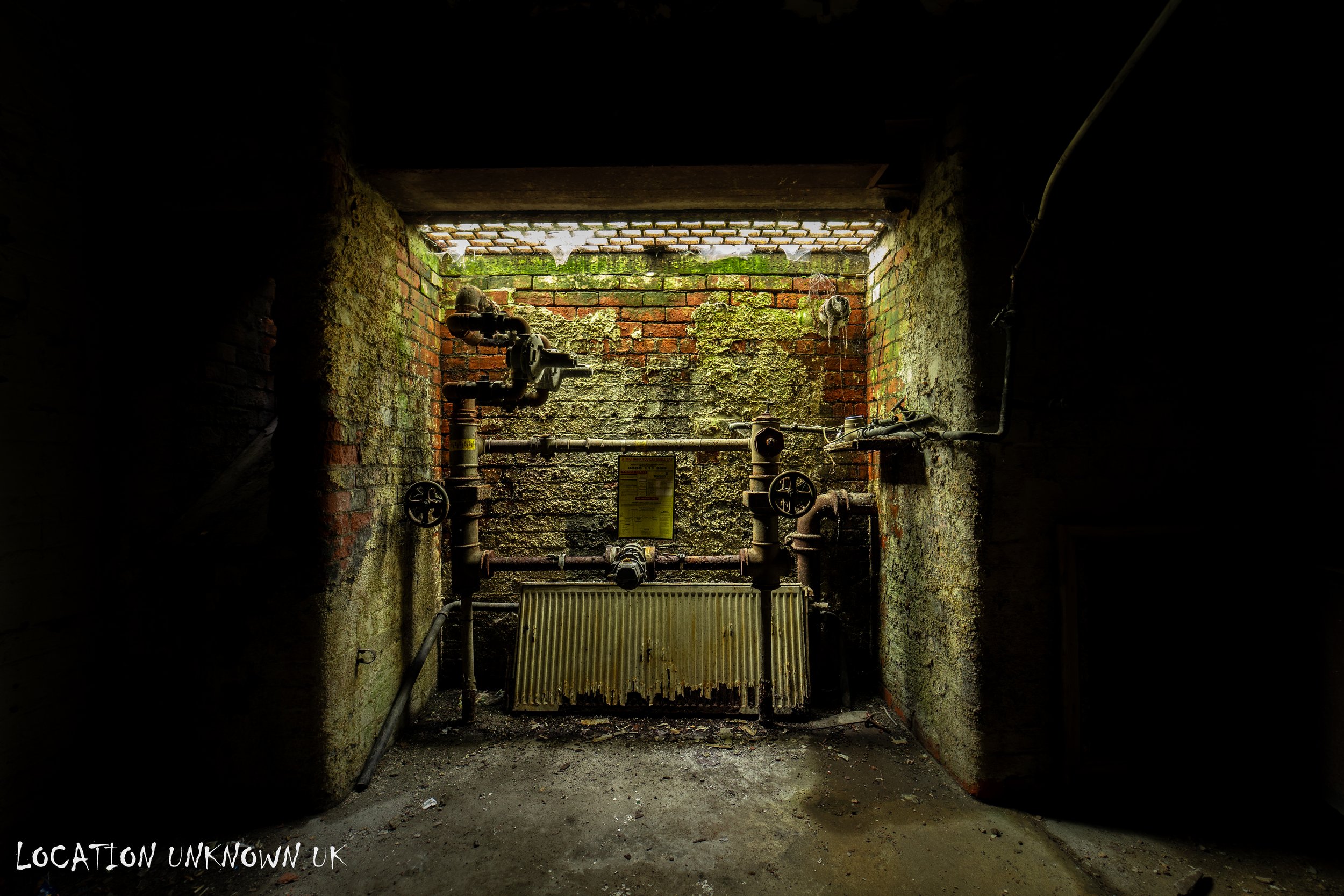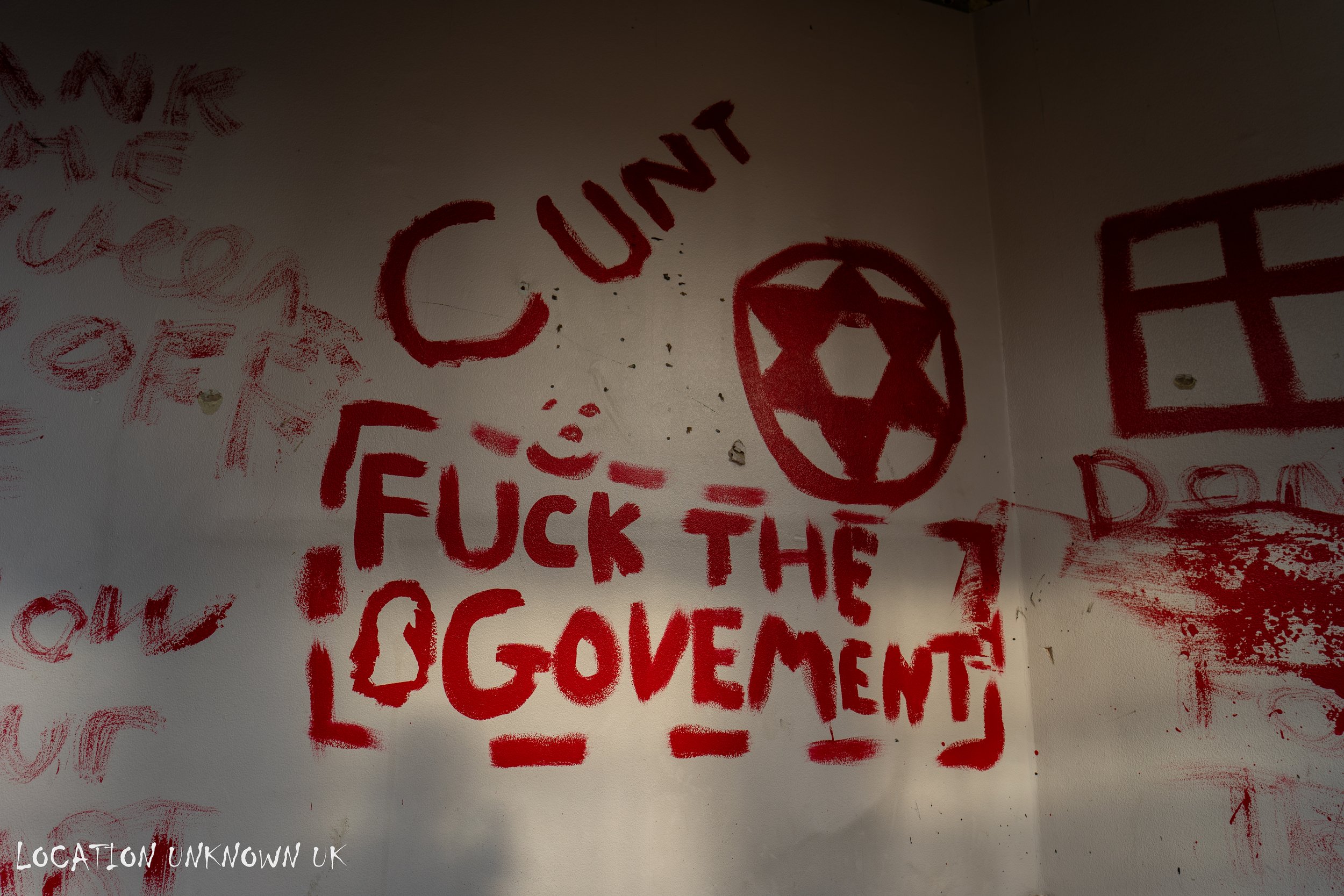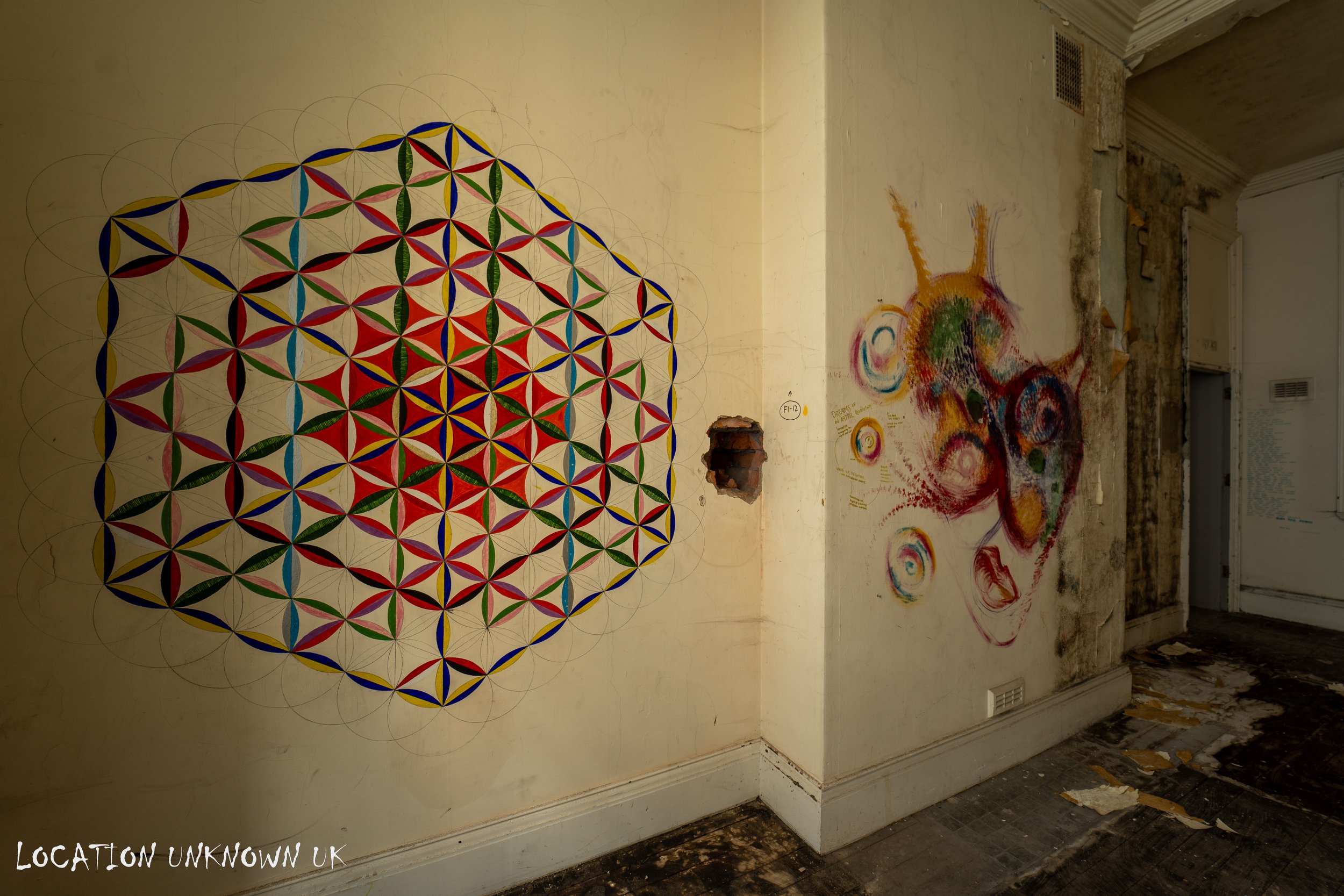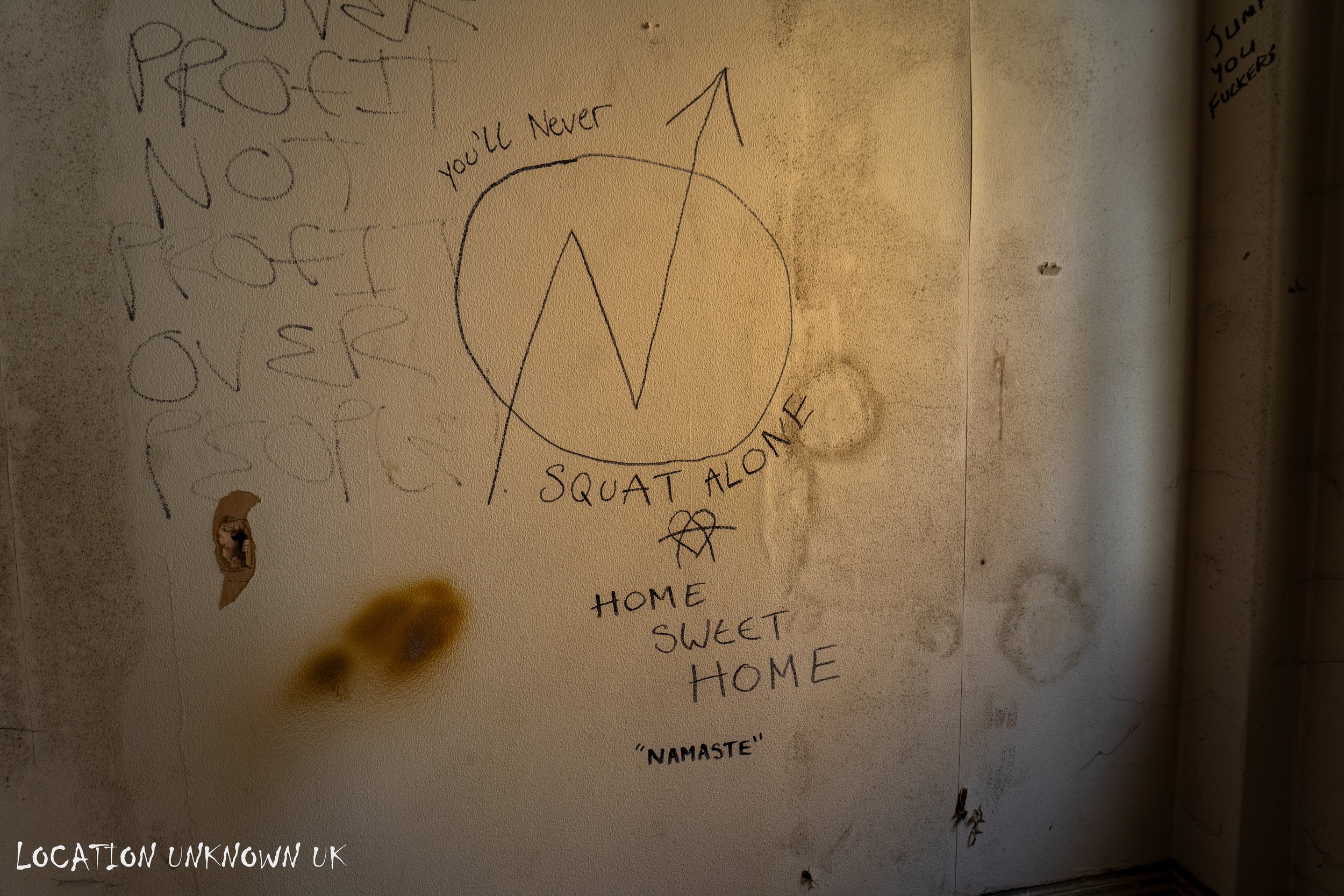Union Bank - Manchester
For years, every time I passed Piccadilly, Ide often take a quick look to check on the Union Bank, and for years, it remained the same: an impenetrable fortress sealed tight from all angles. Then one day, it wasn’t. Access (which has since been completely sealed) was through a fire exit that had been left open. From what I recall, the entire locking mechanism was missing, so apart from an awkward climb onto the site, getting in was relatively easy.
Having been sealed off for so many years, I was hoping to find an untouched time capsule, but unfortunately, that wasn’t the case—far from it, in fact. In recent years, squatters had taken up residence before eventually being removed, paving the way for contractors to begin work on the ambitious plans to transform the building into a 31-storey hotel. Most of the interior had been completely stripped, but some original features remained in the main lobby, which still had a certain charm.
We started by exploring upstairs, but the upper floors felt more like a building site than a 19th-century bank. Finally, we headed down to the basement, which turned out to be the highlight of the visit. The safes were still intact—one was locked, another had seized shut from rust, and a few others were open. This was by far the most interesting part of the building. After spending about an hour photographing the space and nearly as much time unsuccessfully trying to open the rusted safe door, we decided to call it a day and head out.
The building was accessible for about a week before being sealed back up, so I’m glad I managed to tick this one off my list—it had been bugging me for long enough!.
History
“The Union Bank of Manchester, established in 1836, was a prominent financial institution in the city. In 1911, a new Portland stone building, designed by the architectural firm Thomas Worthington and Son, was constructed at the corner of Piccadilly and Chatham Street and completed in 1912, featuring a classical style with a chamfered corner and inscribed frieze. In 1919, Barclays acquired a majority stake in the bank, which continued to operate under its original name until fully rebranding as Barclays in 1940. The building has been vacant for several years, but recent proposals aim to transform the site into a 31-storey hotel while preserving its architectural heritage”.
